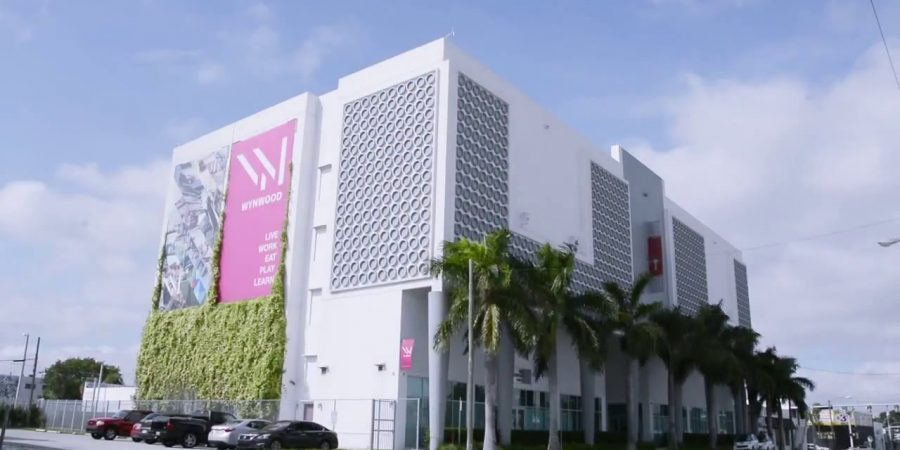Over the past decade, Miami has developed a reputation as a place to buy and sell fine art, in large part because of Art Basel Miami Beach, an annual event that has grown into one of the largest art shows in the U.S. It’s led to a boom in art galleries and other companies that specialize in handling, shipping and storing art.
David Lombardi owns Museo Vault, a secure storage facility he founded in 2009, that specializes in fine art. “Our clientele are art dealers, collectors as well as institutions — and it’s not just South Florida,” he says. “We have clients coming in weekly from Europe and South America as well.”
Lombardi got the idea for the business at an Art Basel event held by an insurance company after the active 2005 hurricane season. “The topic of conversation was how to keep artwork safe in this environment where we have five or six months of terrible hurricane storms that come through,” he says.
Outside, Museo Vault is a multistory, concrete building with few windows. The structure is designed to withstand the 200-miles-per-hour wind speeds of the most powerful hurricanes. The art is stored at least 35 feet above sea level to prevent water damage from even the most ambitious storm surge.
Inside, it’s a state-of-the-art sleek storage facility that includes a viewing room that can be used for showing works, appraisals, restoration or photography and a gallery space. An on-site crate shop allows workers to build customized crates and other storage materials; the company hired Florida native and crating expert Richard Martinez from New York’s Boxart to lend expertise. He is Museo Vault’s service manager and one of the company’s 11 full-time employees.
When Museo Vault first opened, only one floor was built out with pre-fabricated units that ranged from 50 square feet to 500 square feet. Another floor was set aside for custom-made units, with the company leaving the other three floors to be filled in as needed. The building is now 80% full. Storage prices average about $3 per square foot per month. A regular self-storage facility near Midtown Miami, by comparison, charges between $1.20 and nearly $2 a square foot per month, depending on the unit’s size.
Amor said the company tries to accommodate every type of need, whether individual or institutional. “If you are a client that has a vast collection of art and needs 4,000 square feet, we can build it from scratch,” she said. “If you are remodeling the dining room and kitchen and want to remove three pieces for a couple of months and you just need a slot to store three flat works, we have that too. And everything in between.”
One of the qualities that makes Museo Vault valuable many to clients is that the art handlers are also artists with their own specialties, either in sculpture, metal, paint or other media. “There are not many other teams of guys that I would trust to handle such high-value, high-profile works,” said Chelsea Guerdat, who was contracted by Museo Vault to take on the role of special projects manager for the outdoor public portion of Art Basel.“They’re just incredibly professional and I’m always amazed at their engineering knowledge in figuring out how to get a 3,000-pound tree into a crate into a truck that’s the same size of the crate.”
While Art Basel and its satellite fairs, and the influx of seasonal residents, make winter a busy time for the company, Amor said summer heats up for a different reason: hurricane season, when clients who might be spending the season elsewhere need to make sure their art is secured.
One of Miami’s top art collectors, Marty Margulies, says all art collectors in South Florida need a hurricane storage plan that satisfies their insurance companies. “They want to see sprinklers, hurricane glass, concrete structure, that type of thing,” he says.
To appeal to those insurance requirements, Museo Vault made the pitch that its facility was brand new, built specifically for storing art and providing related services such as making crates, packing, shipping and cataloguing. Security is tight: No one is allowed in without an escort, and entrances have biometric scanners. Temperature and humidity are controlled, and an alarm will sound if they veer outside of approved ranges. The facility’s backup generator is powered by natural gas as a hedge against electricity outages.
Memories of the irreparable damages caused by hurricanes like Katrina and Sandy keep the threat of inclement weather at the front of many collectors’ minds. “The reality is that any storm, regardless of the category, can cause catastrophic devastation,” says business manager Vanessa Amor.
Between seasonal storage, foreign clients, Art Basel ties and other business, Amor said revenues have increased every year. The privately held company would not release financial details, but Amor said the owners are continuing to invest to keep technology updated.
“I think that the future is bright,” Amor said. “We have grown every year since the moment we opened. I can’t see it stopping.”



